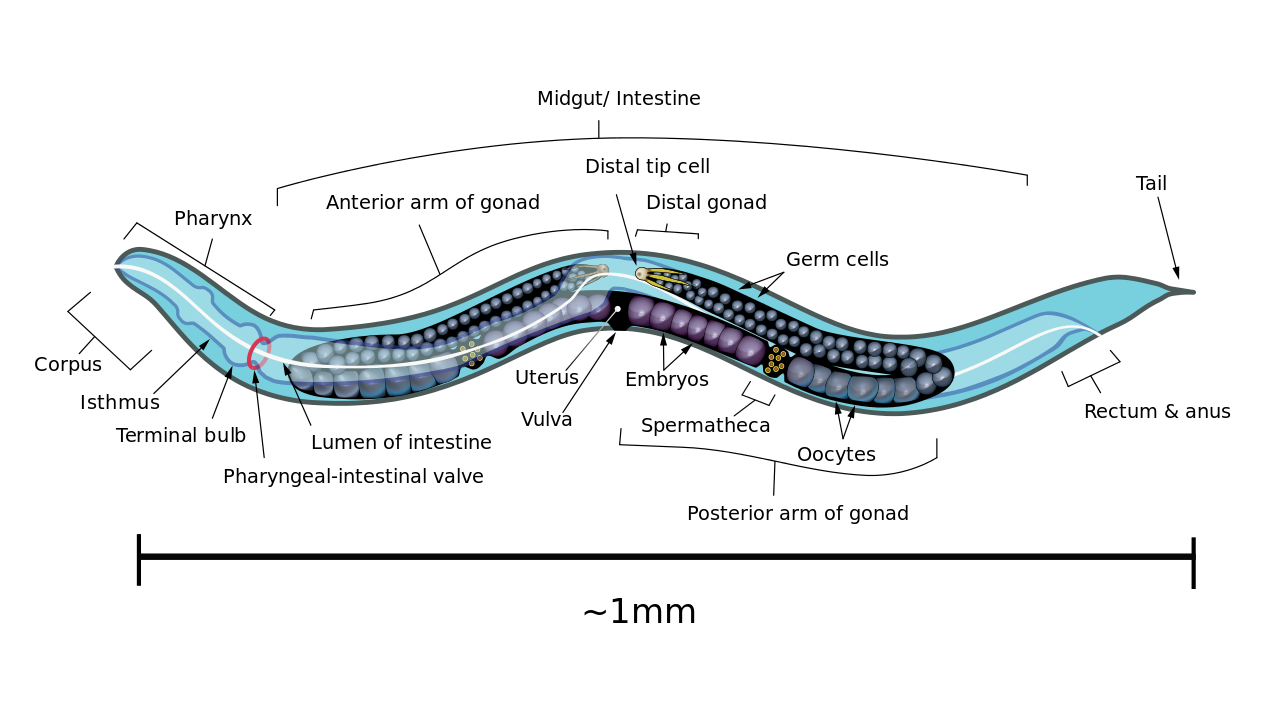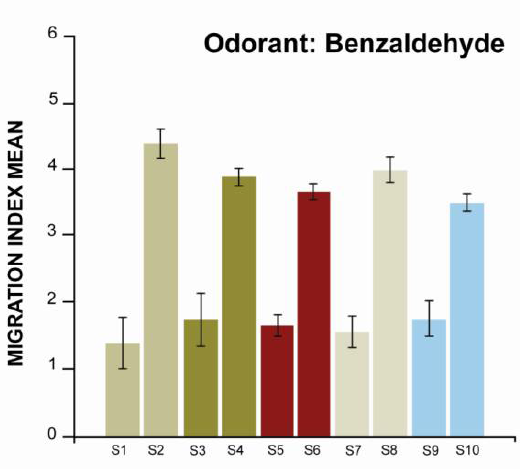Scientists have proved that organisms retain long-term memory during cryopreservation.

Caenorhabditis elegans / Wikipedia
Researchers Natasha Vita-Mor from the American University of Modern Technologies and Daniel Barranko from the cryobiotechnology division of the Spanish University of Seville for the first time proved that the use of cryonics does not destroy the long-term memory of the simplest multicellular organisms. The experimenters were the nematode worms Caenorhabditis elegans.
C. elegans is a model organism popular with scientists. These are the first multicellular creatures in which the genome was completely deciphered (this happened at the end of the last century). An adult worm 1 mm long consists of approximately 1000 cells, and has a nervous system of 302 cells. Its functioning is fully described, so it is convenient to use it to study the mechanisms of controlling movements, transmitting signals through the neural network, chemotaxis (the motor reaction of microorganisms to a chemical irritant), etc.
Experiments with cryonics, i.e. deep cooling of organisms with an eye on their further recovery and return to life are held from the middle of the last century. In 1967, the first man was cryonized, and in 2011, the creator of the concept of cryonics, Robert Ettinger, himself. But one thing is to freeze the body, and another is to bring it back to life safe and sound.
')
There are technologies so-called. “Anabiosis” or, more precisely, a suspended animation (suspended animation), when organisms can survive for several hours without a heartbeat without harm. These technologies are working to rescue the victims, for example, to give them a chance to live to a remote hospital. But the recovery after a long-term deep freeze remains for the future.
Although optimists are already now. There are several organizations in the world that offer services for cryonically freezing people after death, in the hope that someday in the future they can be revived and, for example, cured of today's incurable disease.
In modern cryonics, simple freezing is not used - in this process, crystals that destroy tissue appear in the water. Instead, scientists use a quick freeze, known as vitrification , during which the liquid turns into an amorphous solid like glass. The process also involves cryoprotectants - tissue auxiliary substances.
Researchers used olfactory chemical imprinting as tests for memorization. Worms are able to distinguish odors, and if, for example, any chemical substance is associated with food, then they will react to the presence of this substance and look for a hem. An adult worm is able to memorize smells for several hours, and people that have just been born can remember smells for up to five days thanks to imprinting (imprinting) - the effect of long-term memorization of information from newly born organisms.
Ducklings, growing up and forming in the egg, memorize the voice of the mother-duck and run on it; chickens from birth run after any moving object; nematode worms were grafted affection for benzoic aldehyde . Then the next one was neatly frozen, kept in this state for two weeks, and thawed again. After that, scientists were convinced that the worms did not forget the delicious smell of aldehyde and sought to it no worse than those who were not frozen at all.

The results of experiments with worms. Experimental groups from s1 to s10, vertically - the number of worms that have found food.
s1 - untrained (without imprinting) and not frozen
s2 - trained, but not frozen
s3 - untrained and frozen
s4 - trained and frozen with cryoprotector
s5 - untrained and vitrified with a cryoprotectant
s6 - trained and vitrified with cryoprotector
s7 - untrained and frozen with cryoprotectant
s8 - trained and frozen with cryoprotector
s9 - untrained and slowly frozen with a cryoprotectant
s10 - trained and slowly frozen with a cryoprotectant
Of course, the brain of higher mammals is much more complicated than that of a worm, both quantitatively and qualitatively. For example, in the human brain about 86 billion neurons . But the confirmation that the memory of the worms is preserved during cryonics gives us hope that it is in principle possible in more complex organisms.
Source: https://habr.com/ru/post/365563/
All Articles